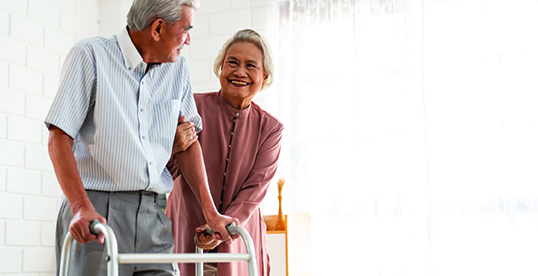
How families can share caregiving responsibilities
Family caregivers are unsung heroes. Such individuals typically provide vital services to their loved ones who cannot fully care for themselves, and they often do so without compensation.
Data from the U.S. Bureau of Labor Statistics indicates the prevalence of family caregivers across the country. According to the BLS, 14 percent of the population, which equates to roughly 37 million people, provide unpaid eldercare across the nation. Unpaid caregivers also provide vital services in Canada, where the Canadian Institute for Health Information reports such individuals provide an average of 17 hours of unpaid care each week (26 hours for those who care for seniors with dementia). Caregiving for a family member can take a toll that affects caregivers’ physical and mental health. According to the Centers for Disease Control and Prevention, caregivers are at increased risk for developing multiple chronic diseases since many neglect their own health needs while caring for others. In addition, roughly 15 percent of caregivers who participated in a CDC survey reported experiencing 14 or more mentally unhealthy days in the past month.
The physical and mental toll of caregiving underscores how important it can be for families to find ways to share caregiving duties. Though each situation is unique, the National Institute on Aging offers the following advice to families as they seek to share the responsibility of caring for a loved one in need.
Identify the care required. The NIA recommends families discuss caregiving needs as early as possible and ideally before an emergency situation arises. If possible, the person in need can participate in this conversation and help to calmly discuss which services are wanted and needed. If a loved one is diagnosed with a condition in its early stages, such as dementia, families can then work together to identify the level of care required in the immediate future and potentially down the road should the condition worsen.
Choose a primary caregiver. The primary caregiver will be the individual who accepts the bulk of the daily responsibilities of caregiving. Identifying this person early, ideally before a primary caregiver is even needed, can limit confusion should the day come when the individual needs daily care.
Determine each caregiver’s contribution. The caregiving team can discuss each person’s skills and how they can be used to take care of the individual in need. This can be particularly useful when assigning specific tasks. For example, a caregiver who works in the medical field may be most qualified to speak to medical staff about their loved one’s condition, while another who works in the financial sector may be tasked with managing a loved one’s bank accounts and ensuring bills are paid on time.
Recognize everyone has limits. A caregiving team is just that: a team. As noted, caregiving can take both a physical and emotional toll, so it’s important that everyone, and particularly the individual chosen as the primary caregiver, receive routine breaks to ensure everyone can take care of themselves. It’s important that a caregiving team maintain a degree of flexibility to account for the physical and mental challenges caregivers may encounter as they tend to a loved one in need.
Sharing the responsibility of caregiving can ensure caregivers and their loved ones in need are not overwhelmed by the challenges they might confront each day. More information about caregiving can be found at nia.nih.gov.
